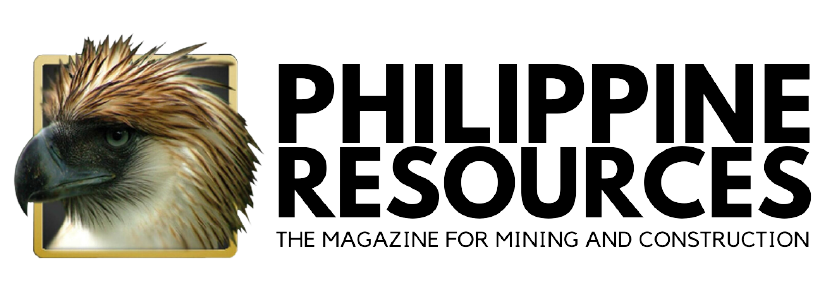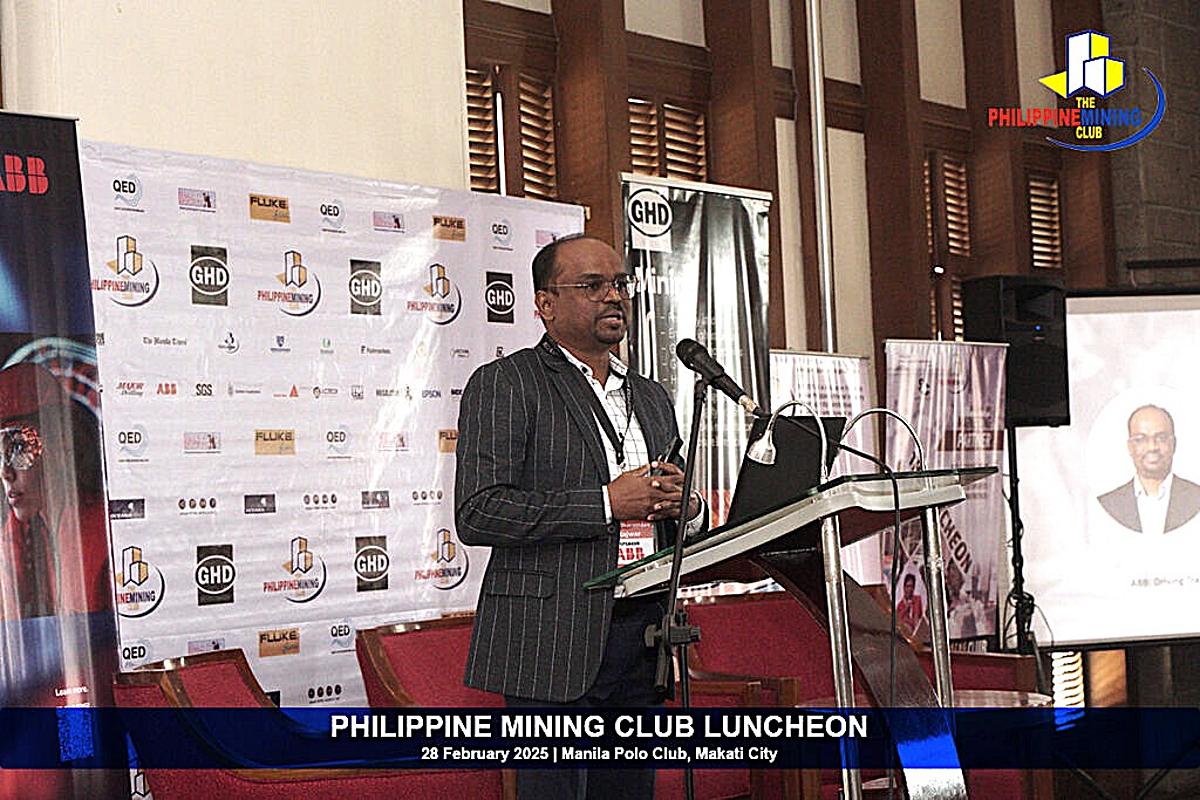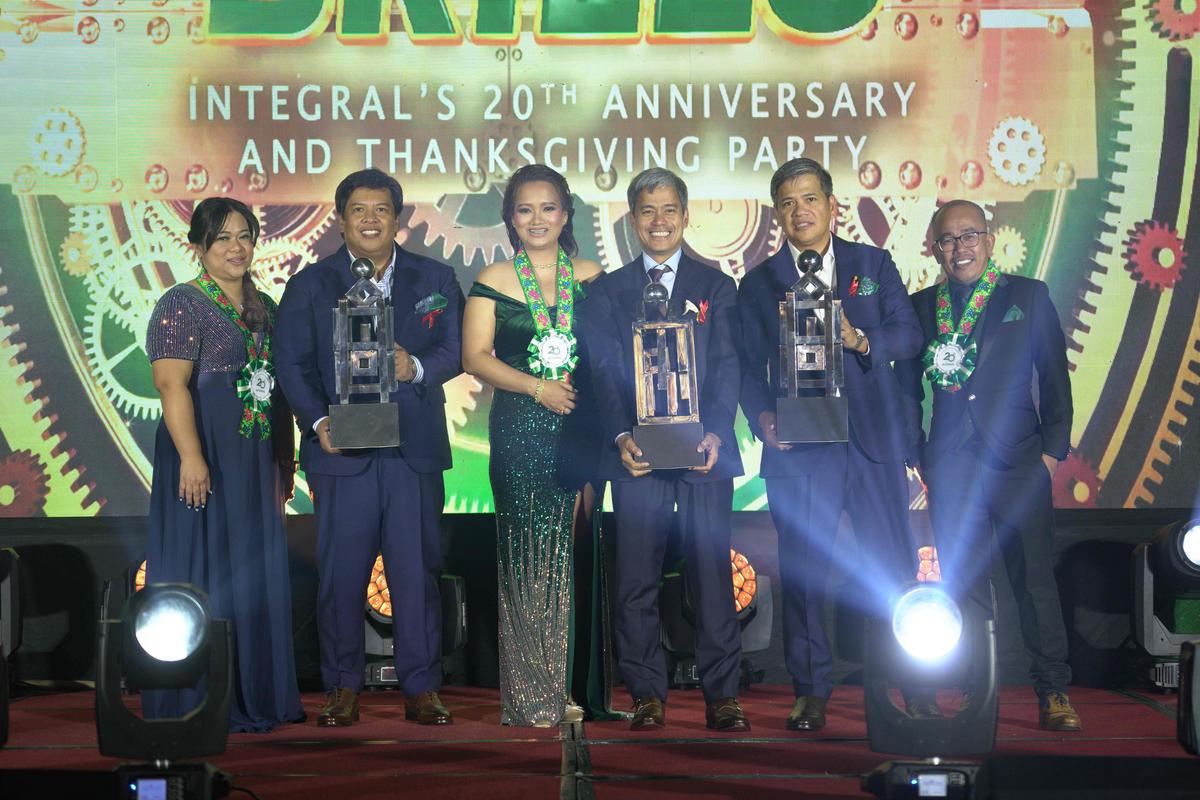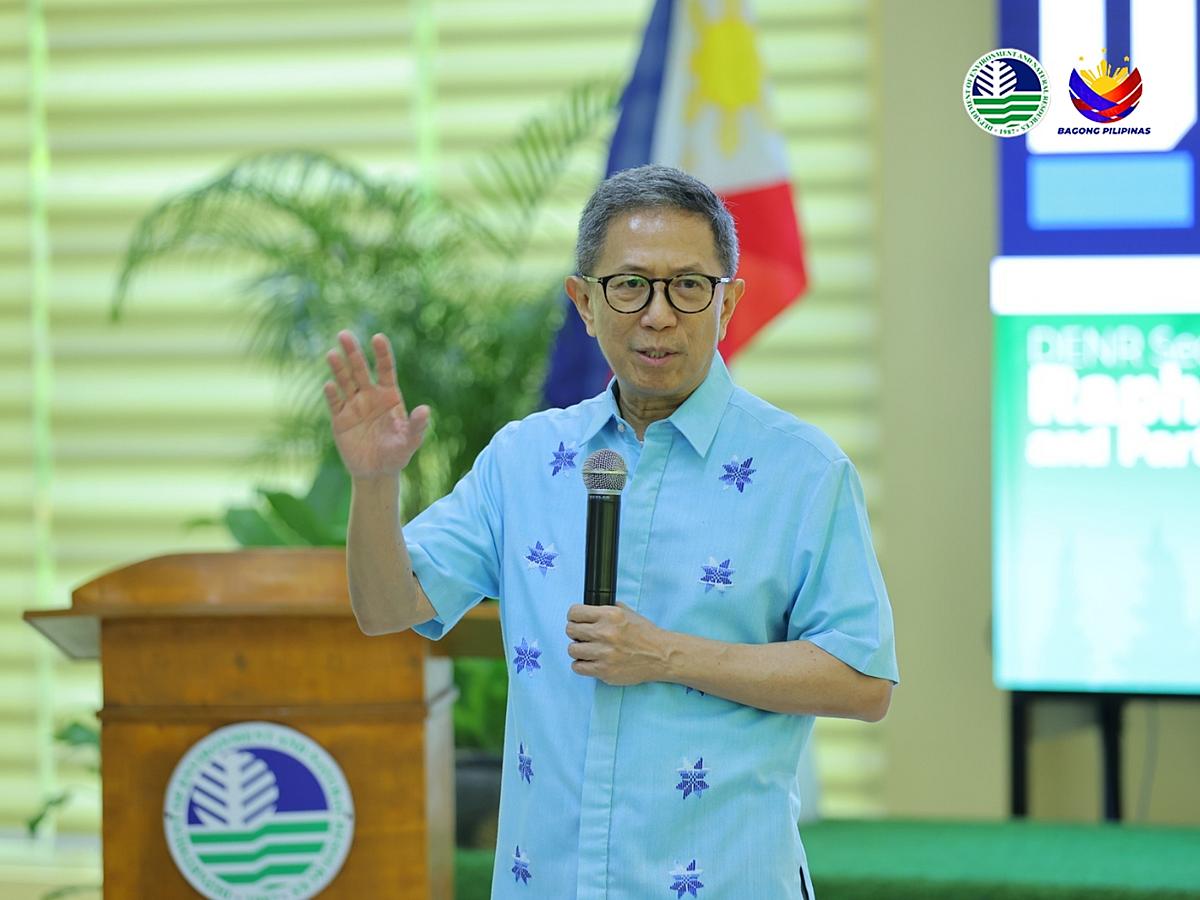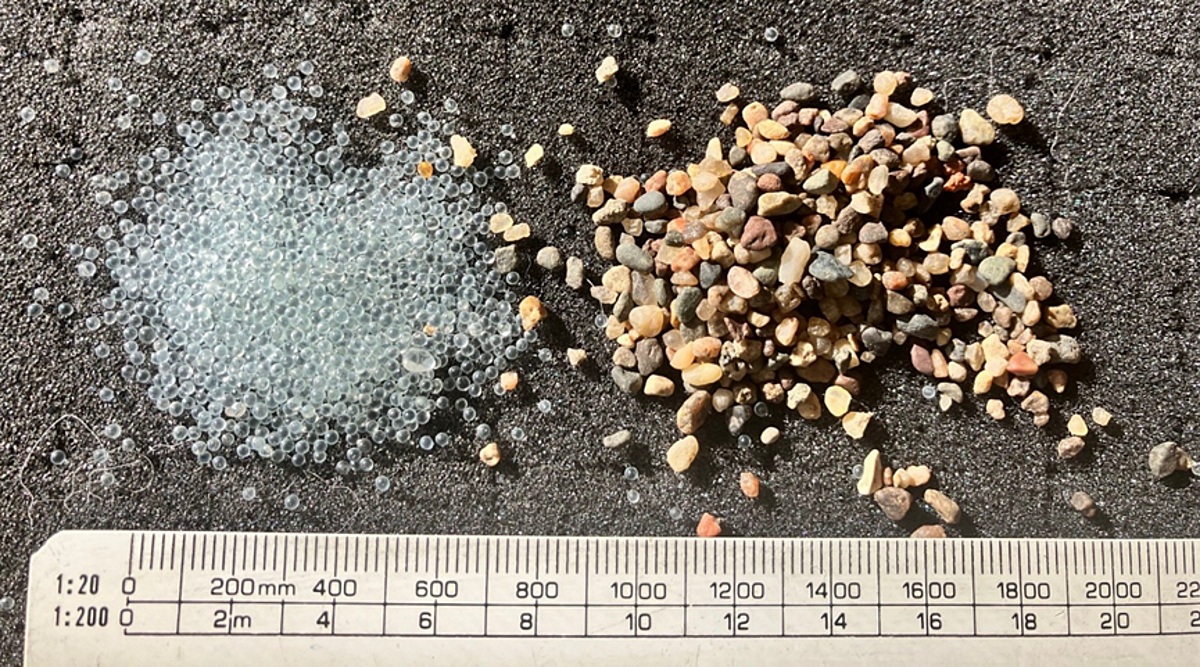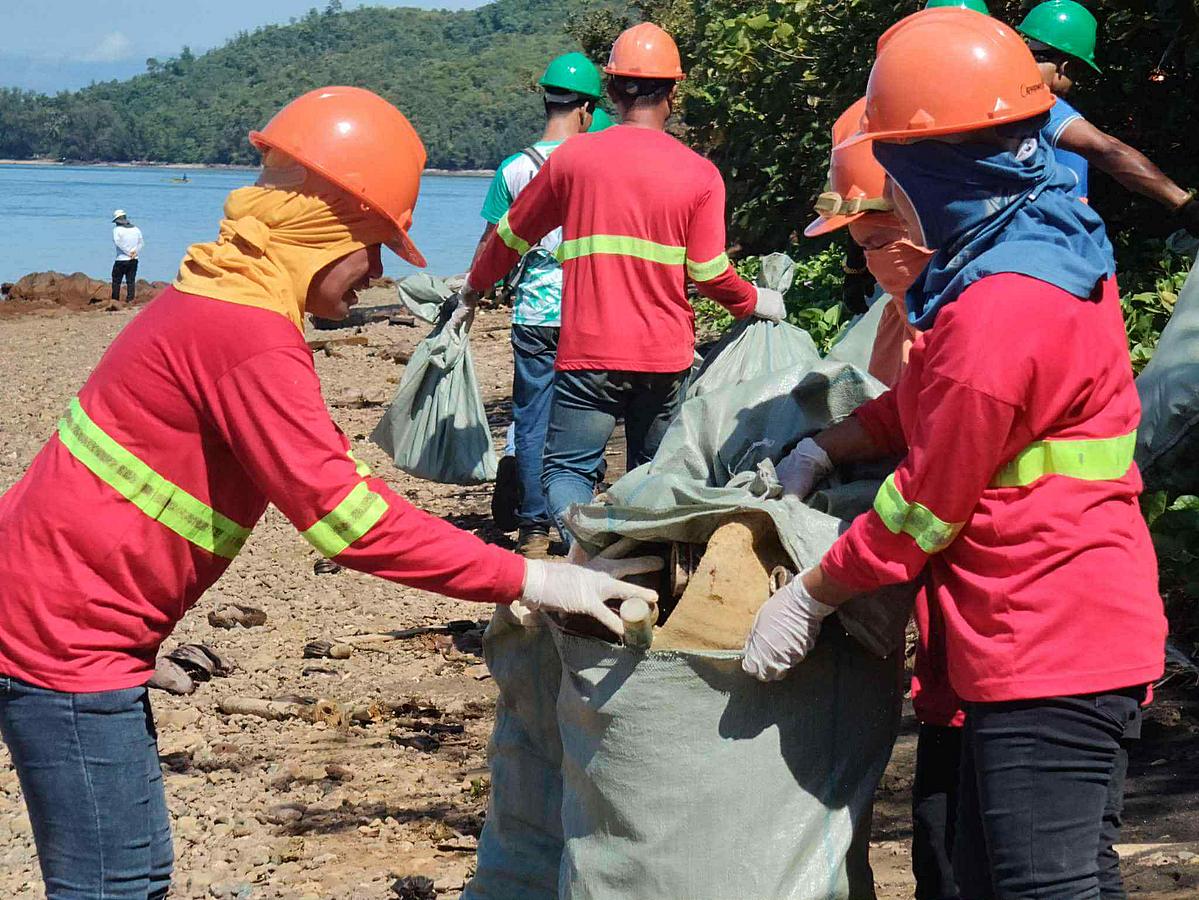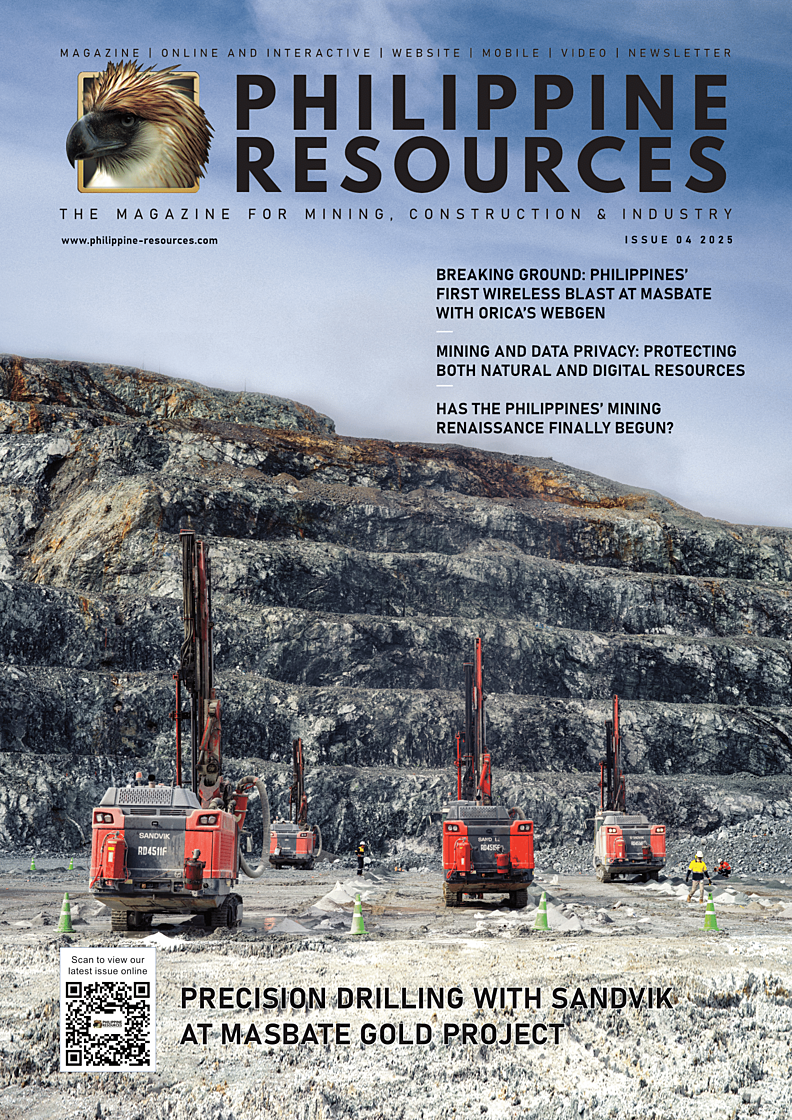Electrification, automation, and digitalization were the core of a discussion in a mining luncheon early this year.
“There is no green future without mining in the present.”
This is a powerful statement coming from a presentation by Philippine Mining Club’s guest speaker, Dharamdev Rajwar, ABB’s Regional Sales Manager – Southeast Asia-Mining. He presented a report titled “Mining's Moment - The pathway for urgent real progress in responsible mining”. The report is a compilation of insights and survey from over 400 mining experts from around the globe, representing 18 countries.
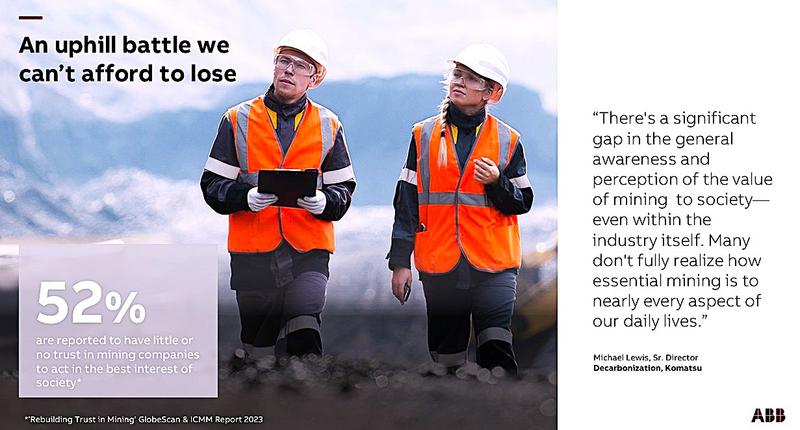
Responsible mining is often a misunderstood theory by many people who are unaware of the technology applied inside a mine site. Rajwar’s lecture gave a clear definition of responsible mining and how it can be achieved successfully by mentioning some case studies with positive results in different countries.
Decarbonization is one of the goals and end results of responsible mining. Rajwar mentioned the biggest barriers to decarbonization in relation to the 2050 vision with the 2030 urgency. “The mining industry is under pressure to transform. The Paris Agreement has spurred change in the mining industry. Mining companies need to prioritize sustainability to meet the rising expectations of communities, NGOs, investors, and societies.” [1]
“Industry changes are needed to attract talent for the future of green technologies.”
Mining industry should be:
- socially responsible - how the company treats its workers and community
- environmentally responsible - how the company affects the environment
- financially viable - how well the company does financially
He reported that in order to inspire change and provide the momentum shift the mining industry needs, ABB is pioneering unique solutions with ambitious partners and organizations. For instance, ABB partners with Komatsu, BHP and Boliden.
From the survey, 77% of respondents believe an integrated approach to technology is essential for sustainable mining transformation. How? Through electrification, automation, and digitalization.
Electrification
Electrification means replacing technologies or processes that use fossil fuels (like internal combustion engines and gas boilers, etc.) with electrically-powered equivalents, such as electric vehicles or heat pumps.
According to the survey, 91% consider electrification as essential to decarbonization strategy, while 76% consider vehicle electrification as having the greatest potential to increase the efficiency and sustainability of mining operations. Then, 68% plan to electrify at least 25% of their fleets by 2030, and 42% plan to invest in the decarbonization of their haulage feel by 2026.
To support this transformation, 50% of respondents believe that OEMs show a strong commitment to open standards and interoperability of assets.
Here is one example of a case study about electric mining vehicles.
Challenge - ABB together with Perenti and IGO developed a landmark study determining the feasibility of using electric vehicles in underground mining operations instead of diesel vehicles.
Solution – They conducted a comprehensive study to assess the technical and financial implications of the transition, considering various aspects of electric vehicle implementation including vehicle types, battery swapping stations and charging infrastructure.
Outcome
- Proven feasibility: Electric vehicles can be as efficient and cost-effective as diesel vehicles.
- Reduced energy consumption: Electric vehicles require less energy for cooling and ventilation
- Changed perception: Change of industry attitudes towards green machinery
One application is eMineTM Trolley System at Copper Mountain in Canada where carbon emission was cut by 90% using this technology.
Automation
Automation improves safety by taking human interaction out of the equation. For example, remote-controlled robotics can remove workers from dangerous working environments. Automation also improves ventilation through 'ventilation on demand' technology.
From the survey, 50% are prioritizing innovation in ventilation over the next 5 years, while 74% believe ventilation is a top solution for enhancing efficiency and sustainability.
To further illustrate how real progress can deliver clean air where and when it's needed the most, the report mentioned a situation in Boliden’s Kankberg gold and tellurium mine in Northeast Sweden.
The challenge was the high energy cost of sending fresh air to its 500m-deep underground shafts. Ventilation can account for up to 50% of energy consumption, compensating for air polluted by diesel vehicles and blasting in underground mines. The solution had to be adapted to current conditions that could change quickly, and expandable for future operations.
The solution from ABB is ABB AbilityTM Ventilation Optimizer. It is a modular system linked to the geolocation of people and vehicles that intelligently supply air into the mine only where and when it is needed, ensuring personnel are not exposed to excessive levels of CO2, dust, and humidity.
As a result, the system is proven to reduce a mine's ventilation costs, extend the lifetime of the ventilation system and create a lasting healthy and safe working environment. This is a significant example on how automation can assure safety of workers in a mine site, an information that can improve the reputation of mining among skeptic minds.
Digitalization
Digitalization streamlines operations and enables remote monitoring, improving safety, and productivity.
Digitalization helps monitor and reduce environmental impact, thus supporting sustainable mining practices. Real-time data enables informed decisions, enhances asset management, optimizes supply chains, and can warn of potential challenges. Enhanced Training & Compliance via AR and VR support effective training.
Here is an example on how digital technology can help goldfields achieve more.
One challenge is from a goldfield in Australia that needed a digital solution to streamline their data capture processes (which was done manually) and utilize this data to drive real business results.
The solution is implementing and integrating ABB's Fleet Management System, underpinned by the ABB AbilityTM Operations Management System for mining (OMS), to support the latest industry 4.0 interoperability standards.
The outcome: enhanced visibility and safety, optimized resource utilization, increased productivity, reduced costs, and enhanced sustainability.
Therefore, how do we make incremental change? Based on the survey, 73% of respondents believe mining transformation requires a new approach to technology and risk management, while 46% say the risk of disruption to operations and production is a key barrier. From the survey, 45% are approaching mine decarbonization with an incremental approach.
Training talent for the future
The workforce of the near future will be led by the Generation Z age group. However, the case study states that Gen-Z workers are difficult to recruit. This may be a problem in the future because they are needed to fill the talent gap.
From the survey, here are some key point about the younger generation and how it will affect the industry:
- Over 40% of Gen-Z and Gen-Y would change jobs over climate concerns.
- 68% of respondents see technology as a driver of diversity and new opportunities, thus may attract Gen-Z talent and widening the industry's talent pool
- 72% of executives have reported that their organizations have started adopting permanent remote working models.
“Developing new sills, particularly in digital technology, is essential to empower employees and prepare them for operating complex equipment in the future.”
In relation to this, 70% of respondents say their business is committed to reskilling and training existing employees to provide the expertise needed to drive decarbonization efforts.
Technology in Underground Mine
“Real progress is elevating underground mine sustainability.” Technology can do so much in improving the operations in an underground mine and in addressing the challenges related with efficiency and safety.
One case study is from BHP’s Prominent Hill Mine, one of Australia’s major copper, silver, and gold mines. The challenge is that in moving from an open-pit operation to an underground operation, an alternative system was needed to extend production from the ore body and transport it to the surface.
The solution -- BHP worked with ABB to develop a hoist solution which increases the mining rate to 6.5 million tons per annum, the fastest and safest way to transport ore.
As an outcome, there is an increase in productivity across a 4-year period, with an estimated 1,500,000 tons of ore transported.
---
Photo credit:
Top photo - Philippine Mining Club
Mining infographics – “Mining's Moment – The pathway for urgent real progress in responsible mining” by Dharamdev Rajwar, ABB
Reference:
[1] https://www.philippineminingclub.com/coming-events/past-events/2025-02-28-pmc-x-metals-exploration-x-abb-mr-darren-bowden/
